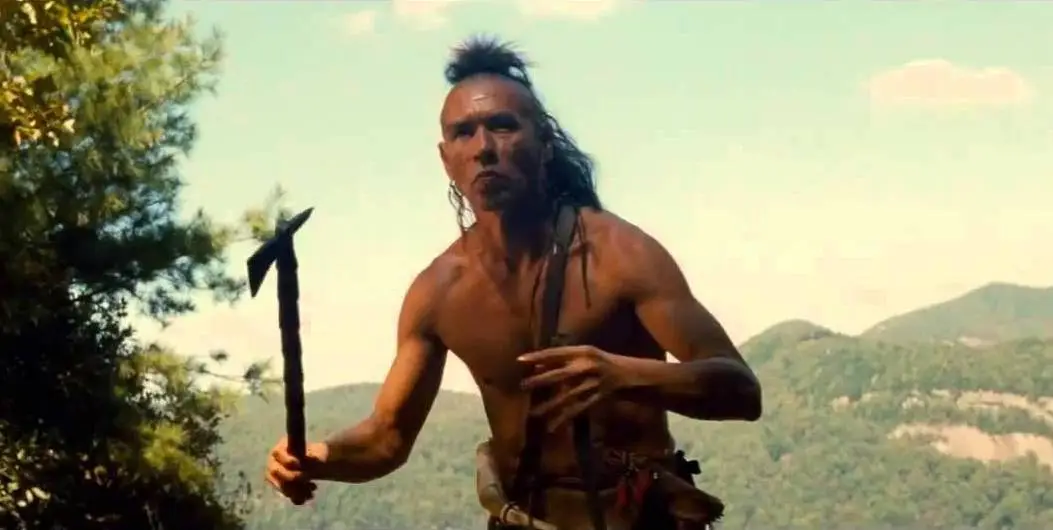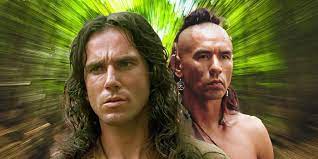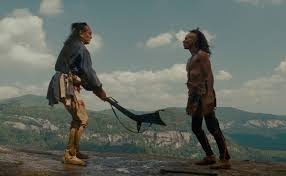🎬 The Last of the Mohicans (1992)

The Last of the Mohicans (1992) Review
Introduction
Directed by Michael Mann and based on James Fenimore Cooper’s classic novel, The Last of the Mohicans (1992) is a historical epic set during the French and Indian War. Starring Daniel Day-Lewis as Hawkeye, a white frontiersman raised by Native Americans, the film blends romance, action, and historical drama to create a visceral cinematic experience. With its breathtaking cinematography, memorable performances, and an iconic musical score, The Last of the Mohicans remains a masterpiece of its genre.
Plot Overview
Set in 1757, during the conflict between British and French forces in North America, the film follows Hawkeye (Daniel Day-Lewis), the adopted son of Chingachgook (Russell Means) and brother to Uncas (Eric Schweig), as they navigate the wilderness of the American frontier. When they rescue Cora Munro (Madeleine Stowe) and her sister Alice (Jodhi May) from a Huron ambush, they become entangled in a larger struggle involving betrayal, war, and forbidden love.
Hawkeye and Cora develop a deep connection amidst the chaos of war, while Magua (Wes Studi), a vengeful Huron warrior, seeks to destroy the Munro family for past grievances. The narrative builds to a climactic confrontation, with themes of love, loyalty, and the inexorable march of history woven throughout.
Strengths
1. Daniel Day-Lewis’s Transformative Performance
Day-Lewis’s portrayal of Hawkeye is both rugged and deeply human. His commitment to the role, including learning wilderness survival skills, brings authenticity and intensity to the character, making him one of cinema’s most memorable heroes.
2. Wes Studi’s Riveting Antagonist
As Magua, Wes Studi delivers a complex and chilling performance. Magua’s motivations, rooted in personal vengeance and cultural loss, make him a multi-dimensional antagonist who commands attention in every scene.
3. Breathtaking Cinematography
Dante Spinotti’s cinematography captures the untamed beauty of the American frontier with sweeping landscapes, dense forests, and roaring waterfalls. The visual grandeur enhances the film’s epic scale and immerses viewers in its historical setting.
4. Iconic Musical Score
Trevor Jones and Randy Edelman’s score, featuring the haunting “The Gael,” is one of the most recognizable and emotionally resonant soundtracks in film history. The music elevates the film’s dramatic and romantic moments, leaving a lasting impression.
5. Authentic Period Detail
From the meticulously crafted costumes to the realistic depictions of 18th-century warfare, the film’s attention to historical detail creates a believable and immersive world.
Weaknesses
1. Simplification of the Source Material
While the film’s streamlined narrative makes it more accessible, it sacrifices some of the depth and complexity of Cooper’s original novel. Fans of the book may find certain characters and themes underexplored.
2. Limited Development of Supporting Characters
While Hawkeye and Cora are richly developed, characters like Alice Munro and Major Duncan Heyward (Steven Waddington) receive less attention. Their arcs, though compelling, could have been further explored to enhance the emotional stakes.
3. Pacing Issues in the Second Act
The film’s middle section slows down as it transitions between action sequences and character development. While these moments provide depth, they slightly disrupt the film’s overall momentum.
Themes and Symbolism
1. Cultural Clash and Identity
The film explores the intersection of Native American, British, and French cultures, highlighting the tensions and alliances that defined the colonial era. Hawkeye’s identity as a bridge between worlds underscores the possibility of coexistence amidst conflict.
2. The Cost of War
Through its visceral battle scenes and personal tragedies, the film portrays the devastating human toll of war, emphasizing the fragility of life and the fleeting nature of peace.
3. Love and Sacrifice
The central romance between Hawkeye and Cora serves as a testament to the enduring power of love, even in the face of insurmountable odds. Acts of sacrifice, particularly in the film’s emotional climax, reinforce this theme.
Visual and Technical Aspects
1. Action Sequences
The film’s action scenes are visceral and intense, with a focus on realism and choreography. The climactic final chase and confrontation are masterfully executed, leaving a lasting impression.
2. Sound Design
The immersive sound design enhances the film’s authenticity, from the clash of musket fire to the rustling of leaves in the wilderness. Combined with the score, the auditory elements elevate the viewing experience.
3. Editing
While the film occasionally lingers on scenic shots, its editing effectively balances intimate character moments with large-scale action, ensuring a cohesive narrative flow.
Final Verdict
The Last of the Mohicans (1992) is a masterful blend of romance, action, and historical drama. With unforgettable performances, breathtaking visuals, and an iconic score, the film transcends its genre to become a timeless cinematic experience. Though it simplifies its source material and leaves some characters underdeveloped, its emotional resonance and epic scope ensure its place as a classic. For fans of historical epics and sweeping romances, The Last of the Mohicans is a must-watch.
Rating: 9/10